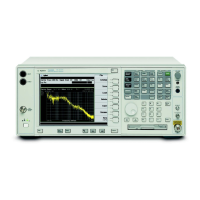290 Chapter 5
Concepts
Analog Modulation Concepts
Analog Modulation Concepts
Modulation Basics
The Measuring Receiver can demodulate and measure three types of modulation:
amplitude modulation (AM), frequency modulation (FM), and phase modulation
(ΦM). In general, modulation is that characteristic of a signal which conveys the
information. A signal without modulation is said to be a continuous-wave (CW)
signal. CW signals contain two information-carrying parameters: amplitude and
frequency. These two parameters, however, are static (time invariant).
Consequently, the information conveyed by them is scant - you know only that a
signal is present at a certain frequency. When one or both of these parameters is
altered as a function of time, the signals is said to be modulated.
The RF signal which is modulated is called the carrier. The modulating signal is
referred to as the baseband signal and can be of any arbitrary form (for example,
voice, tone, noise). Demodulation is the process of recovering the baseband signal
from the modulated carrier.
Amplitude Modulation
As the name implies, a carrier is amplitude modulated when its amplitude is varied
as a function of time. Figure 5-4 on page 291 shows a carrier with amplitude
modulation and, for reference, also shows the baseband signal. As you can see, the
tips of the carrier trace out a waveform that resembles the baseband signal. This
trace is called the envelope. The envelope rises to a maximum called the peak and
drops to minimum called trough.
A quantity which describes the amount of AM or the AM depth is the modulation
index. If the peak amplitude is called P an the trough amplitude is called T, the
modulation index m (usually expressed in %) is defined as
m = (P-T)/(P+T)*100%

